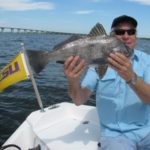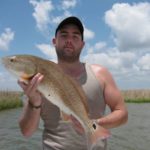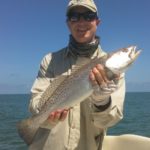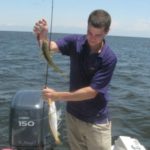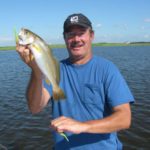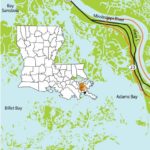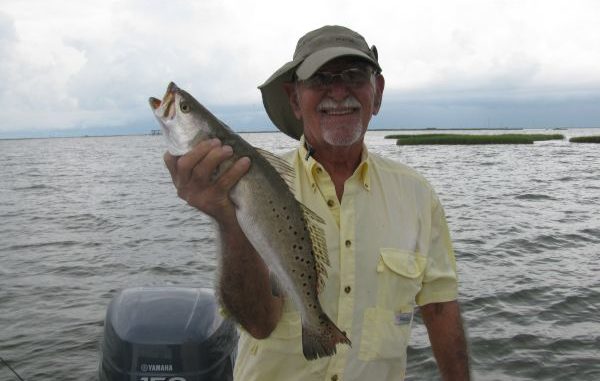
The east side of the Mississippi River south of Empire has all but melted away, but move a little to the west to find all the school trout, reds and puppy drum you can handle.
Scarlett O’Hara often got this look. But poor Ashley Wilkes never noticed. Glenn Close got it in Fatal Sttraction, and Michael Douglas caught it in the nick of time.
Looooocy Ricardo and Lady McBeth were no slouches in this look either. Nor was Queen Isabella, who — lest we forget — was the one who financed Chris Columbus after King Ferdinand laughed him off him as a scam artist and quack.
No doubt we’ll see these looks at their absolute best on The Real Housewives of Kenner and Chalmette — should reality TV producers ever get cranking on this sure-fire blockbuster.
But Maggie, Doc Fontaine’s sister, was always a ringer for Scaaaw-let O’Hara, right down to the suggestively scheming eyebrows. So the Gone with the Wind vixen is the one we always mention when Maggie visits from Atlanta and gets into scheming mode.
“What’s Scarlett up to now?” I asked Pelayo during Trisha’s birthday party.
Pelayo had been buttonholed by Maggie for about 15 minutes near the Ceviche platter.
“Not much,” Pelayo said. “Wants us to take Cody fishing.”
“I thought Doc was taking Cody?” I said.
“That’s the problem,” Pelayo laughed. “Cody’s begging to weasel out of another fishing trip with his uncle. Like they did last time, Doc and Spencer wanna take him fly-fishing. Naturally Cody wants no part of it. He went when they were down for Easter — had his fill, he says.”
You might wonder why.
“‘As boring as deer hunting,’ Cody had said, while rolling his eyes. Well, the type of deer hunting Doc takes him on — I guess so!” Pelayo roared. “Remember when Maggie was down for the Christmas holidays? Doc brought Cody with him to his cushy power-line box stand, which certainly seemed properly avuncular and generous of the good doctor.
“But then Cody had to let walk a spike. Worse still, Doc didn’t let his nephew open up on the crows that were perching in the trees around them or the rabbit that hopped around the edge of the food plot most of the morning or on the woodies they flushed from the slough. We heard all about it; the boy moped for the rest of the weekend, almost tripping over his bottom lip. He says he can’t wait to go nutria hunting with us again, like when they were down for Mardi Gras, where his gun actually went off — and quite often! Not to mention that ….”
“Here we come to save the day!” Artie yelled form behind us, cutting short the rest of Pelayo’s explanation.
“Who’s that?” Maggie laughed as Artie approached her singing and waving. “Mighty Mouse or Andy Kaufman’s first Saturday Night Live skit?”
Didn’t matter. In seconds Maggie got the point: We’d take Cody off the hook.
Instead of the comatose morning he dreaded, Cody was coming with us for an action-packed fishing trip chasing school specks under “da birds,” mixed in with some hot red and puppy drum action along what’s left of the grassy shorelines in the Bastian Bay/Grand Bayou area south of Empire.
The boy was in store for some action — and his “trophies” would provoke more reverential “ooohs” and “aahhs” from his friends and family than any picture or anything hanging on a wall.
His trophies would be golden brown and piled high on a serving platter next to the lemon and Artie’s homemade tartar sauce.
Now these are fishing trophies everyone can gloat about.
The erosion in the general area we planned to fish is simply horrendous — but we found that hot fishing has simply moved west a few miles.
To wit: The type of fishing available 10 to 20 years ago from, say, the Empire Canal east toward Bayou Grand Laird and Red Pass is now available west of the Empire Canal — roughly from the canal to the Lake Washington/Lake Robinson areas south of Port Sulphur.
The marsh east of the canal has almost completely vanished. No English Bay. No Bay Crapaud. No Cyprien or Scofield. No Chicharas, Skipjack, Pomme d’ Orr bays anymore.
They just “ain’t dere no more,” in the words of Benny Grunch and Da Bunch.
And the marsh just to the west of the canal is going fast, but in the process of going it provides some dynamite fishing, especially for school specks under “da birds” (i.e. black-headed gulls) and for shoreline reds, drum, sheepshead and flounder.
You can still get into the specks over the oyster reefs in what used to be English Bay, Scofield, etc., east of the Empire Canal. But for redfish, there’s no shoreline left in that area. Hence our shift slightly westward.
Honest geologists have found some infuriatingly politically-incorrect causes for the horrific erosion in this area. On top of this area being deprived of vital sediment from the river, the sinking land also results from a geologic fault line appropriately dubbed the Empire-Bastian Bay fault. This line extends westward toward Golden Meadow, where similar horrific erosion occurs.
This fault line is the cause of much rage and anguish among greenie scientists — not so much the horrific erosion, but rather the dilemma that they can’t blame it on the oil companies.
Indeed, here’s the Earth goddess in all her glorious beneficence at work perfectly naturally. Pretty, ain’t she?
Sadly, the marsh is going fast around the western shore of Bastian Bay toward Grand Bayou, too. But there’s still enough marsh to fish.
And the sad — or bittersweet — part is that an eroding marsh is actually good for fishing, especially for reds whose top food item is crabs, especially the juvenile ones that hide out in the grass and crevices of an eroding marsh. A high tide lets the reds enter these areas, where they can root around, snatching up the little morsels, along with the cocahoes that also hang around in this grassy stuff.
A high and dropping tide is ideal.
Cody would see many a plunging cork, and then feel that classic and powerful school-speck SMACK! Then the surface swirl. Then that yellow mouth thrashing the surface. Then another savage jerk as a second trout grabs the tandem jig.
Cody was in for some action!
Much of it courtesy of the gulls — not terns, but gulls.
The black-headed ones, the ones that laugh at you — “ah-ha-ha-ha-ha” — when you lose a trout at boat-side and start cursing.
Follow them in this area, and you’ll find the trout. It’s (usually) that simple.
But we’re not talking huge trout here. We’re talking schoolies, with some white trout mixed in. And it’s easy to tell when it’s a white trout. They fight harder.
“Over there!” Cody yelled out 20 minutes after we launched Artie’s boat and entered (what used to be) Bayou Cook. “There’s some birds!”
“Wrong kind,” Pelayo gently corrected the boy. “Those are terns. We’re looking for gulls, black-headed gulls. The kind that sound like Aunt Na-Na laughing at Uncle Mitch after a few beers, when his face gets all red.”
“Let’s check ’em out anyway,” said Artie, gunning the boat toward the fracas as we jerked the rods from holders and snapped on beetles and corks.
At 50 yards, he cut the motor and we drifted toward the little splashes that peppered the surface.
About a dozen of the noisy birds filled the morning air with screeches while they flapped and twisted over the current lines. Their “skreeeaaks, skreeeaks” almost sound like the proverbial fingernails on the blackboard. Every few seconds, a tern would dive and smack the surface.
“See that?” Pelayo pointed toward the water near the bow.
Yep. As usual we were on a current line. Clashing currents always seem to concentrate fish — dolphin and tripletail along the sargassum-marked offshore rip, kings and cobia where murk meets green a little closer inshore, bass and reds where duck-pond water meets muddy bay water during a falling tide in the marshes, and trout in bays like Adams and Bastian.
Here was perfect proof. But were trout smacking these shiners?
We cast for five minutes amidst the little splashes without a single hit. Not even a swipe.
“Told ya!” Pelayo quipped, as Artie cranked the engine and sped off. “Wrong kinda gull.”
“Now THAT’S them!” Artie said, pointing toward Grand Bayou as we entered Bastian Bay. “Over there!”
Yep — a flock of them sat in the water about 300 yards away. Some hovered over the water, dipping their beaks onto the surface. Yep. These were eating shrimp herded near the surface by the trout below.
We got to within 50 yards before they lifted. Nothing on the surface gave away any action below.
Didn’t bother us. Three corks hit the water simultaneously, and two instantly plunged.
“They’re here!” Pelayo howled, with his rod high overhead.
“Nice one, too!” I gasped as my cork finally plunged on my second pop.
Man that pressure on the end felt good. Then the fish hit the surface in a gorgeous swirl.
“Think I got TWO!” Artie screeched from the bow. He’d cast with tandem shad rigs — the same lure he swore by when Ernie “The Wheel” Wheelright and Walter “Flea” Roberts were burning up the turf in Tulane Stadium.
I was on the second trout as Artie heaved aboard his double. One fell off midway up, hit the stern and flopped back in the water.
“Ah-ha-ha-ca-ca-ca!”
Sure enough the gulls started laughing at Artie.
“Hear ’em?” Cody whooped, as his trout flopped against the console.
It was bedlam for about half an hour. We boated 26 fish. Then the school drifted off just as the dolphins showed up.
Artie cranked the engine while looking around.
“Where’d they go?” he asked.
“Over there!” an excited Cody yelled. “Look!”
“A little different from fly-fishing with uncle Mitch, hunh, Cody?” Pelayo asked, as Cody roared with laughter.
Sure enough, another flock of black-headed gulls hovered about a quarter mile away. We sped over, alongside three other boats who’d caught on.
We drifted in, and the gulls lifted.
Same thing here. More action. More cork-plunging, spool-screeching, kid-squealing bedlam. They’d hit green beetles, yellow shad rigs and white grubs. They’d hit them rigged single and tandem. They’d hit them with shrimp or plain. They’d hit them while tight-lining or under corks.
Sometimes they hit the cork itself. They’d almost yank the rod from your grasp, and then erupt on the surface with yellow mouths agape, rattling their gills and jaws in their effort (not always vain) to shake the hook.
We had a ball. By noon, we had 48 specks in da box.
“Now let’s go hunt reds.” Pelayo smiled from the bow.
“Yep!” Artie did a thumbs up. “The tide’s high and falling — perfect for shoreline reds!”
So we rumbled toward a grassy shoreline a couple hundred yards off. We zeroed in, as always, on the windward side of the cove.
As we approached, I saw the murky waves lapping over the grass on this eroded shoreline, and could make out what looked like a current line. Just as importantly, the depth finder showed 2 feet.
The place had rat red, puppy drum and sheepshead written all over it.
My cork hit the water first. Under it was a green sparkle beetle tipped with half a shrimp. The cork hit about 2 feet from the grass, and immediately a slight current started pushing it along.
Another favorable sign.
Grassy, wave-lapped shoreline in 2-foot depths.
You couldn’t order a better situation, I was thinking to myself when — “WHOA!” — my cork plunged, even before my first pop.
I reared back, and it was off to the races.
“WOW!” was all Cody could manage, while watching my spool empty and the wake barreling across the shallows.
In minutes he was wrestling with his own fish, after casting only a few yards from where my cork had vanished. Cody’s pole was high overhead as he cranked furiously.
Just as Pelayo reeled in the slack, his reel gave a mighty screech to prove my point, and the rod was almost jerked from his grasp.
“Oh YEAH!” he beamed. “Feels like a red, alright!”
I was still savoring mine. Its berserk run took it back and forth in front of the boat, as I gained — then lost — line. I held my pole high overhead, and bellowed my joy to the heavens, just as it exploded in a froth of grey and copper.
“Eight-pounder for sure!” I raved, as the red barreled off on another run and I felt the muscles in my forearms bunching up from the strain of the battle.
“Forget it, Cody!” I hollered as I saw him reaching for the net. “Go get yourself one. They’re stacked up along that shoreline, podnuh. I can net mine myself.”
Cody smiled, and his shrimp-tipped green beetle 2 feet under a cork was on its way shoreward posthaste. I was just dipping the net under mine when he erupted.
“Whoo! Yeah! Awesome!” he screamed.
He had a crazy look on his face as a wake streaked across the shoreline and plunged into the flooded grass itself.
“Work him out, Cody,” Pelayo counseled. “Work him outta that grass so he won’t cut the line!”
So Cody tightened his drag a bit, muscled the redfish out of the flooded spartina and battled it in the open water.
This spot yielded four reds, two drum and a flounder before petering out.
That’s the thing with this type of fishing: You never really find massive schools in any one place. But you find enough fish and enough variety to make for an action-packed trip.
We ended the day with seven reds (far from a four-man limit), three puppy drum, two sheepshead, two flounder, plus the school specks and white trout. For us, an immensely successful and enjoyable outing.
For Cody — “AWESOME!” as he kept telling his Mom that night.

